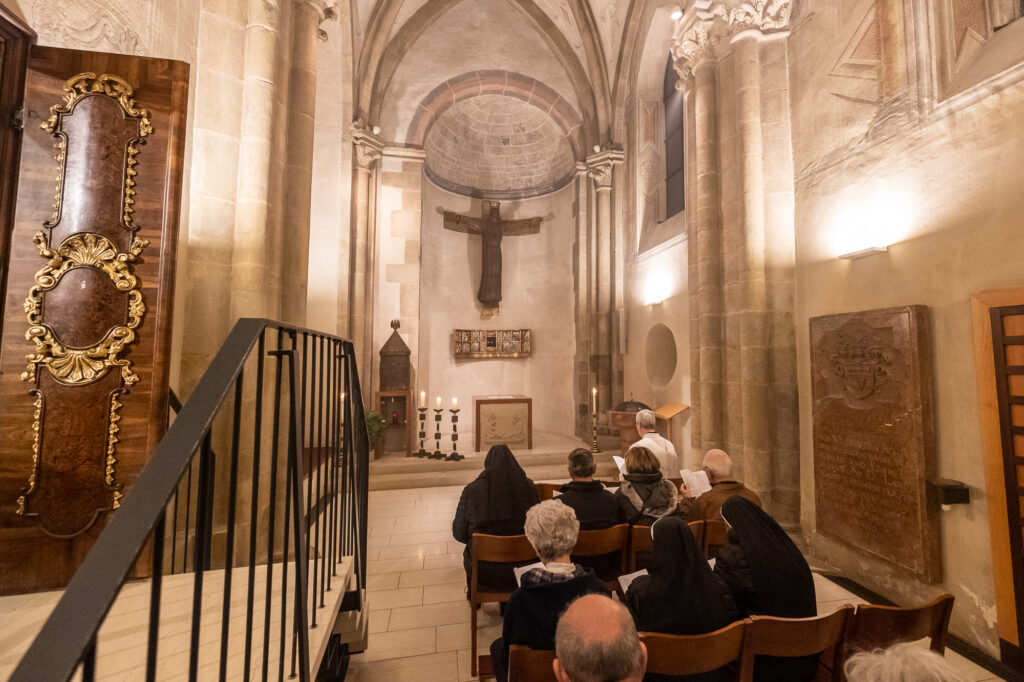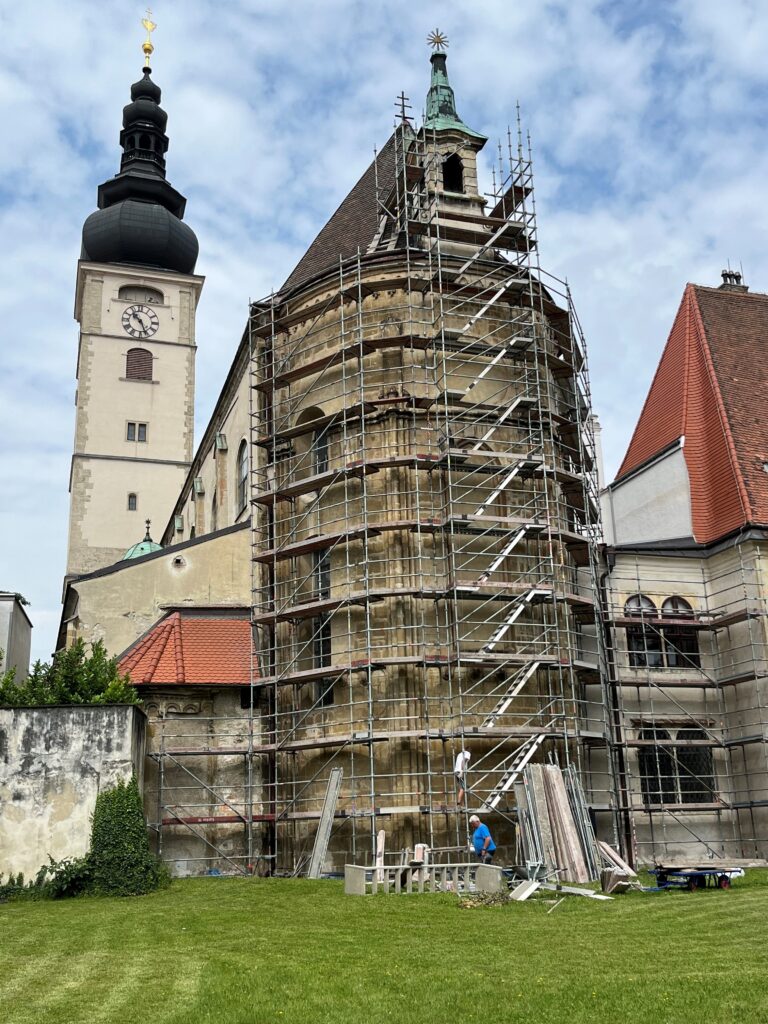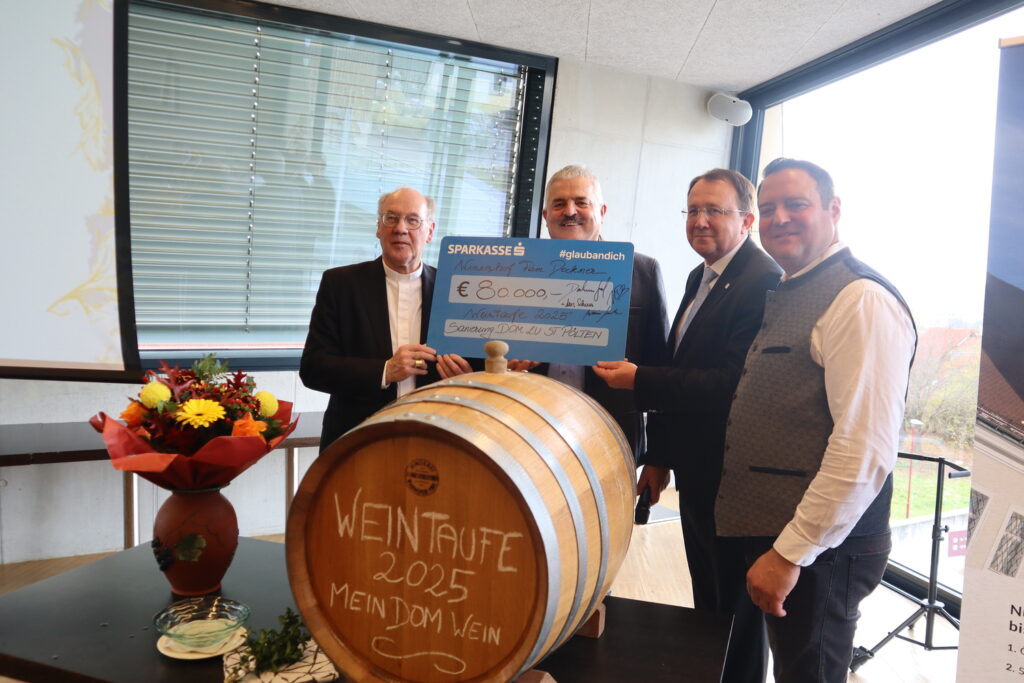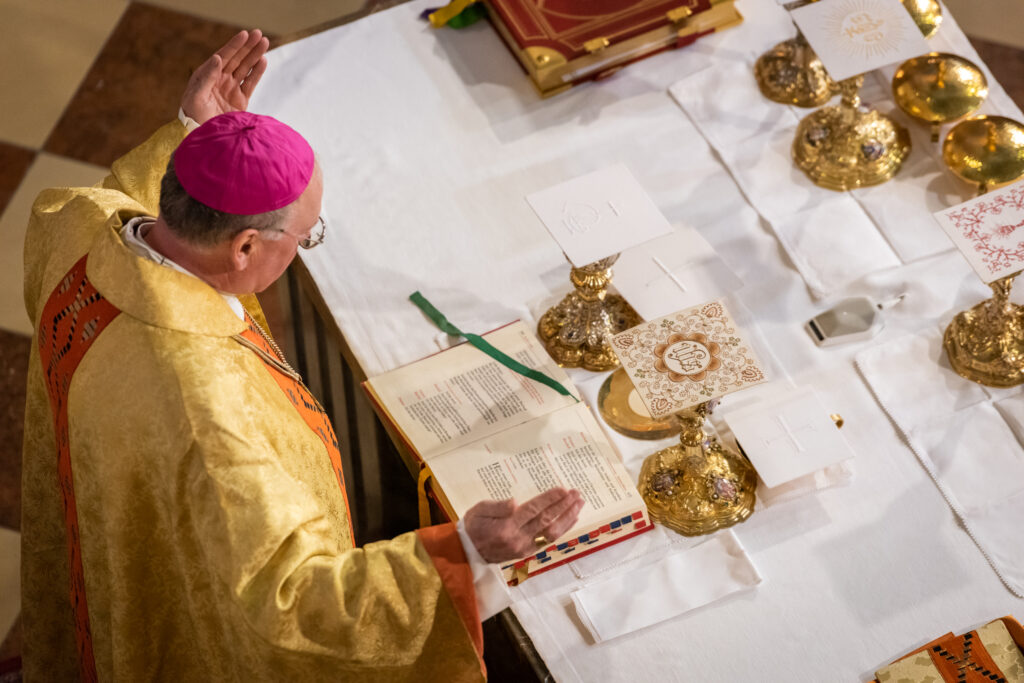The cultural significance of St Pölten Cathedral.
St. Pölten Cathedral - a place with history
Around the year 800, a monastery was founded on the site of today's cathedral and diocese building on St. Pölten Cathedral Square, where the relics of the Roman martyr Hippolytus were venerated. This was the first monastery to be founded in what is now Lower Austria - the Hippolytus monastery and its church marked the beginning of both Christianity and Benedictine monasticism in Eastern Austria. This place is therefore of immense importance for the spread and consolidation of Christianity. The centre and starting point of these developments is the former monastery church - today's cathedral.
After around 1,000 years of existence, the Hippolyt Monastery was abandoned by Emperor Joseph II in 1784. In 1785, the former monastery became the seat of the newly founded diocese of St. Pölten. This made St. Pölten an episcopal city and the monastery church became the cathedral.
Medieval walls & baroque splendour - the artistic significance of St. Pölten Cathedral
Today's St. Pölten Cathedral is one of the most important sacred buildings in Austria. For around 1,200 years, the church has been a place of living faith - this is also evident in its artistic decoration. The cathedral is the oldest church in the capital of Lower Austria: the baroque splendour conceals medieval buildings from the 12th and 13th centuries. Inside, today's Rosary Chapel still bears impressive witness to that era. However, the late Romanesque-early Gothic elements are also clearly recognisable on the outside, for example on the east apse or on the north side visible from the cloister. They essentially date from the construction phase that was completed with the consecration of the church on 11 October 1228.

Rosary Chapel © DSP
Natural disasters such as fires and structural adaptations led to changes to the church. The high altarpiece by Tobias Pock (1658), which depicts the patron saint of the Assumption of the Virgin Mary, is still preserved from the first wave of baroqueisation from the middle of the 17th century. The current appearance of the church dates mainly from the first half of the 18th century: under Provost Johann Michael Führer (reigned 1715-1739), a crypt was created and the church was extensively remodelled in Baroque style: The small domes were created in the side aisles, all the walls were clad in stucco marble and partially gilded, choir stalls, pulpit, organ and most of the altars were erected. The paintings on the ceilings and some of the paintings on the side altars were finally realised in the 1740s. It was important to Provost Johann Michael Führer and his successors to bring the leading artists of the time to St. Pölten: Jakob Prandtauer, Daniel Gran, Jakob Christoph Schletterer and Bartolomeo Altomonte were involved in the baroqueisation of the church; Paul Troger was also active at St. Pölten Abbey in those years, painting the ceiling murals in the newly built monastery library just a few metres from the cathedral (now in the Museum am Dom). The close connection between the prominent artists (some of whom also settled in the city) and St. Pölten Abbey and the church is also illustrated by the fact that both Jakob Prandtauer and Daniel Gran were originally buried in the crypt of today's cathedral.

High altar © DSP
St. Pölten Cathedral as the cultural centre of the diocese
The building on today's Domplatz was already an important cultural centre as a monastery in the early Middle Ages and remains so today as the seat of the diocese. As an episcopal church, the cathedral is the spiritual and cultural centre of the diocese of St. Pölten - the heart of the faith. Numerous activities around the cathedral bear witness to the rich Christian heritage of Lower Austria to this day:
- The Museum am Dom bears the cathedral in its name: It is the oldest diocesan museum in Austria. In 2024, after several years of adaptation work, it will once again be accessible across its entire area. The permanent exhibition shows the development of Christian art over the centuries, an exhibition in the former air raid shelter of the diocese provides insights into the situation of the church of St. Pölten during the Second World War (from 20 September 2024); annually changing exhibitions complement the programme. museumamdom.at
- The St. Pölten Cathedral Orchestra not only performs the liturgy in the cathedral, but also numerous high-calibre concerts. It is known far beyond the borders of Lower Austria, as various radio broadcasts show. dommusic.com
- The church music festival "Musica Sacra" takes place every year in autumn at various locations in central Lower Austria. The festival begins and ends in St. Pölten Cathedral. festival-musica-sacra.at
- Every year in mid-August, the diocese of St. Pölten celebrates the feast of the diocesan and city patron saint Hippolytus. A varied programme highlights the importance of this saint.





